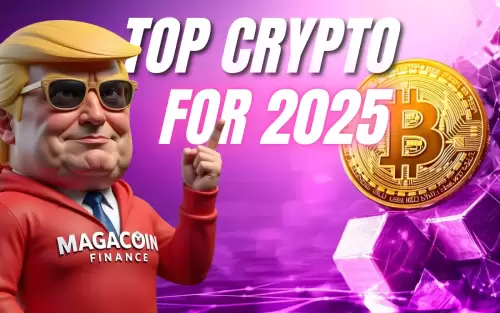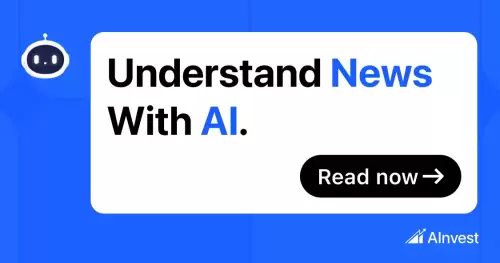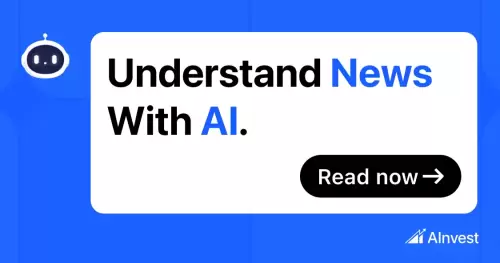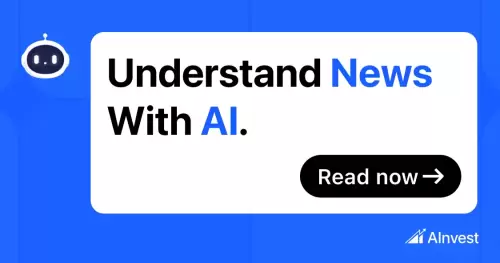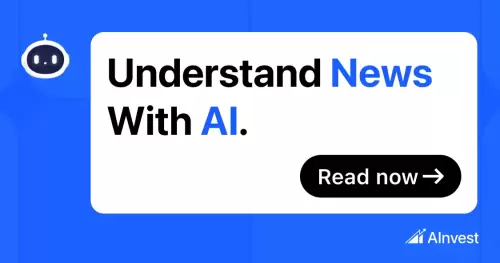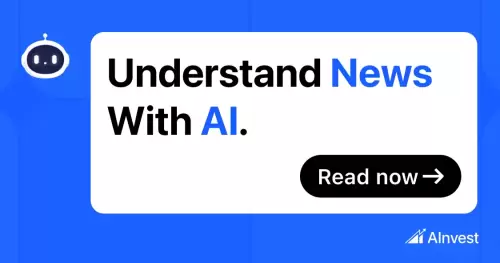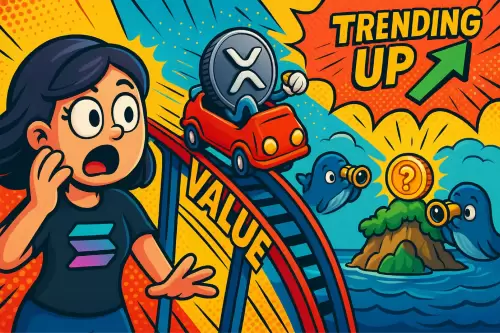 |
|
 |
|
 |
|
 |
|
 |
|
 |
|
 |
|
 |
|
 |
|
 |
|
 |
|
 |
|
 |
|
 |
|
 |
|
インターネットやモバイルデバイスからの最新のテクノロジーは、かつて民主主義と解放のツールとして告げられ、監視と利益のエンジンになり、社会を再構築します

Modern technology, often heralded as a tool for democracy and liberation, has become largely an engine of surveillance and profit, reshaping society to benefit corporations more than communities. As Alex Karp argues in The Technical Republic, the engineering focus has shifted from deep tech that strengthens societies to consumer tech that serves corporate interests.
多くの場合、民主主義と解放のためのツールとして告知される現代のテクノロジーは、主に監視と利益のエンジンになり、社会を再構築してコミュニティよりも企業に利益をもたらしています。アレックス・カープが技術共和国で主張するように、エンジニアリングの焦点は、社会を強化する深い技術から、企業の利益に役立つ消費者技術に移りました。
Artificial intelligence, now poised to reshape society, stands at a crossroads: will it follow this path or chart a new one.
現在、社会を再構築する態勢を整えている人工知能は、岐路に立っています。それはこの道をたどるか、新しい道にチャートしますか。
Crypto, promised as a decentralized revolution, has largely failed to deliver, mired in speculation and unfulfilled promises. However, a new opportunity emerges: decentralized artificial intelligence. By combining crypto’s infrastructure with AI’s transformative potential, we can redeem crypto’s vision and ensure AI serves the greater good, not corporate greed.
地方分権化された革命として約束された暗号は、主に実現に失敗し、憶測と満たされていない約束に悩まされています。しかし、新しい機会が現れます:分散化された人工知能。 CryptoのインフラストラクチャとAIの変革の可能性を組み合わせることにより、Cryptoのビジョンを償還し、AIが企業の貪欲ではなく、より大きな利益に役立つようになります。
The problem: Crypto’s stumbles and AI’s peril
問題:CryptoのつまずきとAIの危険
Blockchains and cryptocurrency promised to disrupt industries by eliminating middlemen and streamlining systems like finance and supply chains. Bitcoin (BTC) and stablecoins have found traction, but smart contracts, once revolutionary, have fueled mostly speculative DeFi projects and meme coins rather than real-world solutions. The gap between crypto’s ambition and reality has eroded trust.
ブロックチェーンと暗号通貨は、財務やサプライチェーンなどの中間者と合理化システムを排除することにより、産業を破壊することを約束しました。ビットコイン(BTC)とスタブコインは牽引力を発見しましたが、かつて革新的なスマートコントラクトは、実際のソリューションではなく、ほとんど投機的な債務プロジェクトとミームコインに燃料を供給してきました。 Cryptoの野心と現実の間のギャップは、信頼を損なっています。
AI could end up reshaping everything—from healthcare and science to the way we govern society. But when just a few companies control that kind of power, there’s a real risk of deepening inequality, increasing surveillance, and even steering public opinion.
AIは、ヘルスケアや科学から私たちが社会を統治する方法まで、すべてを形成することになります。しかし、ほんの数社がそのような力を制御している場合、不平等を深め、監視の増加、さらには世論を導くという本当のリスクがあります。
If you look back, technologies like the internet or nuclear energy were developed with heavy government involvement. That’s not the case with AI. It’s largely in the hands of private corporations now, and that brings up a pressing question: Is this technology being built for the common good, or just for profit? Without intervention, AI could follow social media’s path, exploiting users rather than empowering them.
振り返ってみると、インターネットや原子力エネルギーなどの技術は、政府の大規模な関与で開発されました。 AIの場合はそうではありません。それは主に民間企業の手にありますが、それは差し迫った質問をもたらします:この技術は共通の利益のために構築されていますか、それとも単に利益のために構築されていますか?介入がなければ、AIはソーシャルメディアのパスに従うことができ、ユーザーに力を与えるのではなく、ユーザーを悪用できます。
Why decentralization is essential for AI
AIにとって分散化が不可欠である理由
The breakthrough here is not just technical, but also economic. In decentralized AI networks, every layer of the AI value chain can be distributed in real time. Data custodians who supply datasets, model architects who publish improved weights, and application builders who deliver user experiences can all earn a proportional share of on-chain rewards. Because every transaction settles on a public blockchain, everyone can audit who earned what and why, creating radical accountability that proprietary labs cannot match.
ここでのブレークスルーは、技術的なだけでなく、経済的です。分散型AIネットワークでは、AIバリューチェーンのすべてのレイヤーをリアルタイムで分散できます。データセットを提供するデータカストディアン、改善された重量を公開するモデルアーキテクト、およびユーザーエクスペリエンスを提供するアプリケーションビルダーは、すべて鎖の報酬の比例シェアを獲得できます。すべてのトランザクションはパブリックブロックチェーンに落ち着くため、誰もが誰とその理由を獲得したかを監査することができ、独自のラボが一致できない根本的な説明責任を作成します。
This structure unlocks a level of collaborative and competitive velocity impossible inside a single company. Thousands of independent nodes iterate in parallel, stress-testing and improving upon one another’s ideas and forking the best into new sub-networks. Breakthroughs, therefore, compound rapidly instead of waiting for a quarterly roadmap.
この構造は、単一の会社内で不可能な共同および競争力のある速度のレベルのロックを解除します。何千もの独立したノードは、互いのアイデアを並行してストレステストと改善を並行して反復し、新しいサブネットワークに最高を分岐します。したがって、ブレークスルーは、四半期ロードマップを待つ代わりに急速に複合します。
In short, decentralization rewires AI’s incentives so that rewards and governance flow to the true value creators rather than bottling up inside a single balance sheet. That alignment is the difference between an AI future owned by a handful of companies and one that belongs to all of us.
要するに、分散化はAIのインセンティブを再配線し、単一の貸借対照表の中で瓶詰めするのではなく、真の価値クリエイターに報酬とガバナンスが流れます。その整合性は、少数の企業が所有するAIの将来と私たち全員が所有する企業が所有する違いです。
Decentralized AI in action
分散化されたAIの動作
Bittensor is one of the examples of decentralized AI solutions. Bittensor is a live, open network where crypto-economic incentives translate directly into better AI. Independent nodes post tasks, share weights, and benchmark one another’s output. Every interaction is logged on-chain, and contributors are paid in native token Bittensor (TAO) or subnet tokens the moment their work moves the frontier forward.
ビテンサーは、分散型AIソリューションの例の1つです。 Bittensorは、暗号経済のインセンティブがより良いAIに直接変換されるライブオープンネットワークです。独立したノードは、タスクを投稿し、重みを共有し、互いの出力をベンチマークします。すべての相互作用はオンチェーンでログに記録され、貢献者はネイティブトークンビテンサー(TAO)またはサブネットトークンで支払われます。
BitMind, in this economic flywheel, plays the role of a deepfake detector. A swarm of computer-vision models hunts manipulated images and video. Each week, peer nodes re-score one another, and detectors that outperform earn larger rewards. The result is an 88% detection rate, nearly twenty points higher than leading proprietary tools, and real-time adaptation when new deepfake techniques appear.
Bitmindは、この経済的なフライホイールで、Deepfake Detectorの役割を果たしています。コンピュータービジョンモデルの群れは、操作された画像とビデオを狩ります。毎週、ピアノードは互いに再スコアを作成し、アウトパフォームする検出器はより大きな報酬を獲得します。その結果、88%の検出率があり、主要な独自のツールよりもほぼ20ポイント高く、新しいディープフェイクテクニックが登場するとリアルタイムの適応が得られます。
Moreover, instead of one lab dictating what a language model should be, Templar, a decentralized model training, lets anyone supply data, compute, or architectures to optimize training loss. The subnets’ validators determine algorithmically which contributions improve performance, and rewards flow accordingly.
さらに、言語モデルがどうあるべきかを決定するのではなく、テンプル騎士団である分散モデルトレーニングであるテンプルは、トレーニングの損失を最適化するためにデータ、計算、またはアーキテクチャを提供できるようにします。サブネットのバリデーターは、どの貢献がパフォーマンスを改善するかをアルゴリズム的に決定し、それに応じて報酬が流れます。
What binds these projects is the same incentive loop: every incremental improvement, whether a cleaner dataset, an improved model, or improved performance, earns its contributor a larger share of emissions. Open-source altruism finally has a sustainable business model.
これらのプロジェクトに縛られているのは、同じインセンティブループです。クリーナーデータセット、改善されたモデル、パフォーマンスの改善など、すべての増分改善は、排出量の大きなシェアを獲得します。オープンソース利他主義には、ついに持続可能なビジネスモデルがあります。
Crypto promised to democratize money but got lost in speculation. Decentralized AI redeems this vision by creating a sustainable incentive and economic model for open-source AI development. If large-scale generalized intelligence will shape the next century, ensuring its rewards are broadly shared may become crypto’s most important, and most achievable legacy.
Cryptoはお金を民主化することを約束したが、憶測に迷った。分散型AIは、オープンソースAI開発のための持続可能なインセンティブと経済モデルを作成することにより、このビジョンを償還します。大規模な一般的なインテリジェンスが次世代を形成する場合、その報酬が広く共有されることを保証することは、暗号の最も重要で、最も達成可能な遺産になる可能性があります。
Ken Jon Miyachi is the co-founder of BitMind, a company at the forefront of developing pioneering deepfake detection technology and decentralized AI applications. Prior to founding BitMind, Ken served as a software engineer and technical lead at leading organisations such as NEAR Foundation, Amazon, and Polymer Labs, where he honed his expertise in scalable technology solutions. He has written several academic research publications on blockchain from his work at the
Ken Jon Miyachiは、先駆的なディープフェイク検出技術と分散型AIアプリケーションの開発の最前線にあるBitmindの共同設立者です。 Bitmindを設立する前に、Kenは、Scalable Technology Solutionsの専門知識を磨き、Bitmind、Amazon、Polymer Labsなどの主要な組織でソフトウェアエンジニアおよび技術的リードを務めました。彼は、彼の作品からのブロックチェーンに関するいくつかの学術研究出版物を書いています
免責事項:info@kdj.com
提供される情報は取引に関するアドバイスではありません。 kdj.com は、この記事で提供される情報に基づいて行われた投資に対して一切の責任を負いません。暗号通貨は変動性が高いため、十分な調査を行った上で慎重に投資することを強くお勧めします。
このウェブサイトで使用されているコンテンツが著作権を侵害していると思われる場合は、直ちに当社 (info@kdj.com) までご連絡ください。速やかに削除させていただきます。
-

-

-

-

-

-

-

-

-

- XRP、ソラナ、クジラ:暗号の潮の解読
- 2025-08-04 09:30:07
- XRP、ソラナ、クジラの活動のダイナミックな世界に飛び込み、暗号市場を形成する最新のトレンドと洞察を明らかにします。






















































